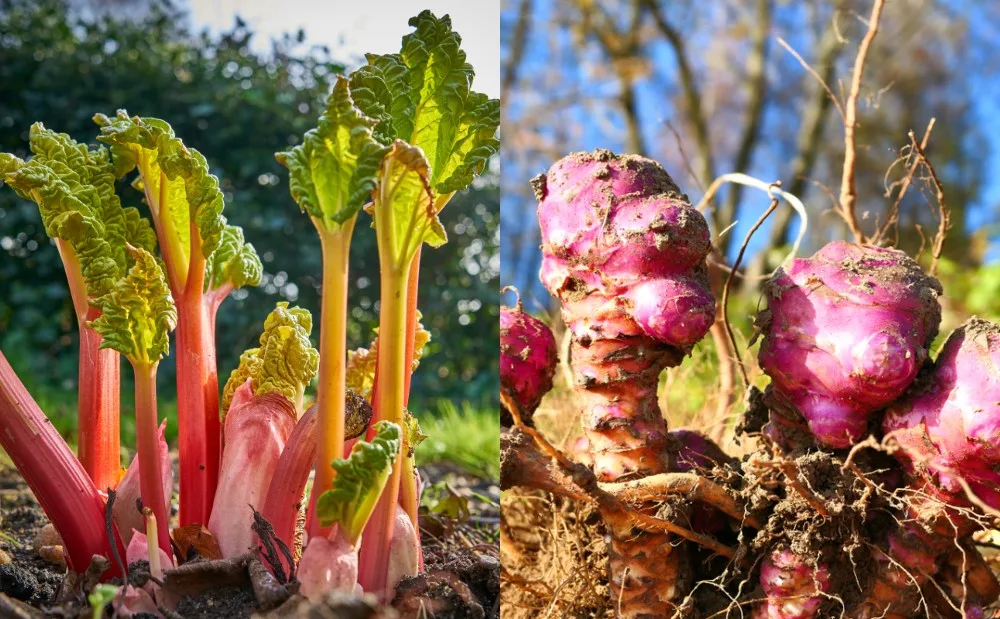
Nature is incredibly diverse, just as it is full of overflowing abundance. We don’t always see it, though it is there.
And yet, we often limit ourselves to a handful of well-known fruits and vegetables.
At some point, your garden and your homesteading skills need to expand, there is no other way around positive growth.
Foraging is one way to embrace diversity – planting perennials is another.
The former can be a wild card, never knowing where or when the opportunity for mushroom hunting may arise. The latter is more reliable, predictable even. There will always be something to harvest when you invest in perennials.
4 reasons to plant perennials in your vegetable garden
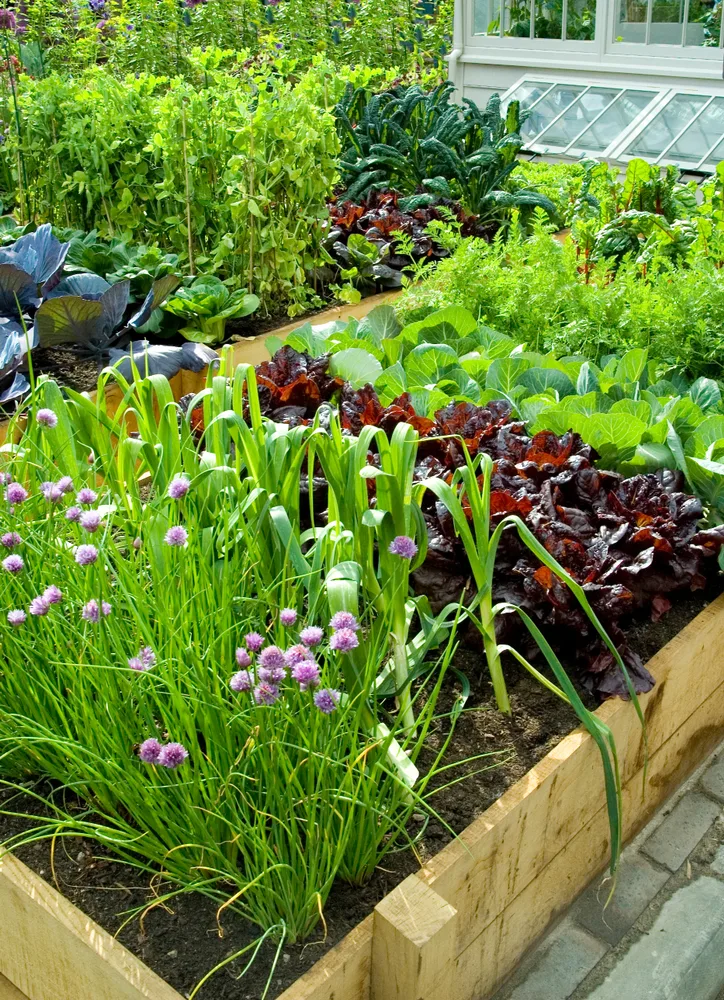
Once you have made up your mind to expand your garden beyond the basics, the opportunities for trustworthy harvest begin to extend in front of you.
Annuals hold a lot of value in today’s modern diet, though it is unwise to forget about all the perennials that got us this far.
Related Reading: Annuals, Biennials & Perennials – 3 Plant Types You Need To Know
Nettle has provided for us in times of need, both as a source of food and fiber.
Alfalfa, dandelions, chickweed, red clover, sheep sorrel, shepherd’s purse, yarrow, henbit and plantain are all edible – if you know what, where, and when to harvest. I’ve tried them all, in fact we often forage for nutrients outside of the garden.
In case you are curious to learn more, here are 62 edible wild plants that you didn’t know you can eat.
With the planting of perennials, you won’t need to roam all that far to harvest the nutritional benefits of perhaps new-to-you vegetables.
First, the benefits of eating perennials:
1. Perennials extend your garden harvest
Most annuals are harvested through summer and fall, but how would you feel about grabbing a basketful of early spring greens to start the season off right (think ramps!)?
Some perennials are ready to harvest, while your annuals are lightly springing into life. Others yet, with edible roots, can be harvested throughout the year, when you are ready for them, not when they are ready for you.
2. Low-maintenance
Once perennial crops are established, they require little care from you.
They are deeper rooted than annuals, so they are hardier in times of drought. It just so happens that perennials are often more resistant to pests, disease and the pressure from other plants they share space with, too.
3. Perennials help to build soil
Hardy perennials live in the no-dig zone. Once they are planted (or voluntarily emerged), they are there to stay (for the most part). Due to the lack of tilling, perennials offer the soil to stay intact.
Moreover, thanks to their deep-rootedness, they draw up and incorporate into their tissues, organs, so their entire precious bodies a lot more trace minerals than the better-known fleshy garden vegetable varieties.
This, in turn, promotes healthy soil structure and a teeming habitat for animals, worms, fungi and bacteria alike.
With time marching on, the plants keep adding more and more organic matter to the soil as they lose their leaves. This builds topsoil and allows those same perennials, and much more, to thrive.
That being said, the perennial plant-parts you are not eating, your topsoil will eagerly incorporate among its nutrient wealth, now having even wider range offerings.
4. Decoration in the landscape
More than just a tasty treat, perennials can provide a beautiful backdrop to all other plants in the garden, as some of them can grow quite large. Often they are used as edging plants, at times they can be planted on slopes for erosion control.
Plus, the bees will be interested, even at times when no other pollen is available.
The 10 best known edible perennials:
1. Rhubarb – Rheum rhabarbarum
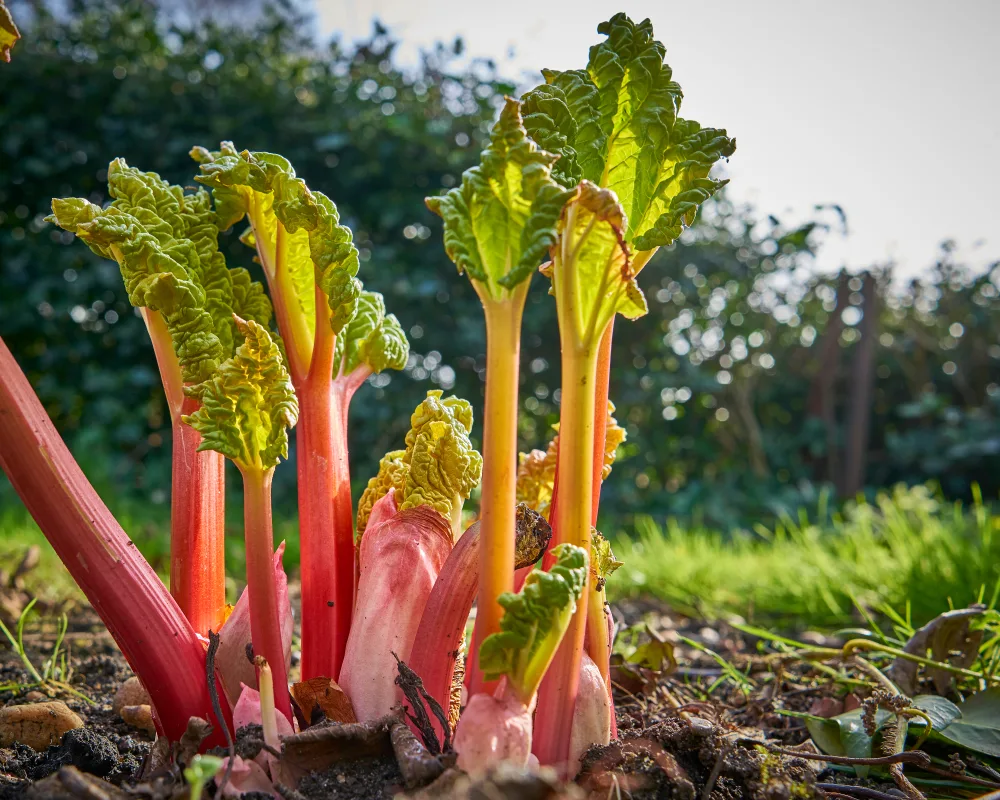
Though the temptation is hard to resist, you cannot harvest rhubarb in the first year, you must first wait for it to establish roots. You will have to wait and see how this plant will only get bigger and bigger as the seasons pass.
It is said that a single rhubarb plant can last 20 years, before needing to be replaced. In the meantime, enjoy all you can of the tart stalks (here are some brilliant recipes), being careful to stay clear of the leaves which are poisonous, but not without their own uses in the garden.
Rhubarb pairs well with strawberries – which are also a perennial of the fruiting kind!
Make sure to plant enough of both, to ensure tasty jams, jellies and sauces for years to come.
Read Next: How To Plant Rhubarb – The Perennial That Produces For Decades
2. Sorrel – Rumex acetosa

One of the earliest greens to emerge from the soil each spring, is sorrel. Call it tangy, zingy or lemony, sorrel has a unique flavor that takes some getting used to. And yet it provides many essential nutrients just as we are coming out of winter.
Sorrel produces well until June, then it begins to flower. You’ll want to pick the leaves while they are young and tender for the finest sorrel sauce.
Being that sorrel is not sold as supermarket produce, find some seeds and plant your own.
3. Chives – Allium schoenoprasum
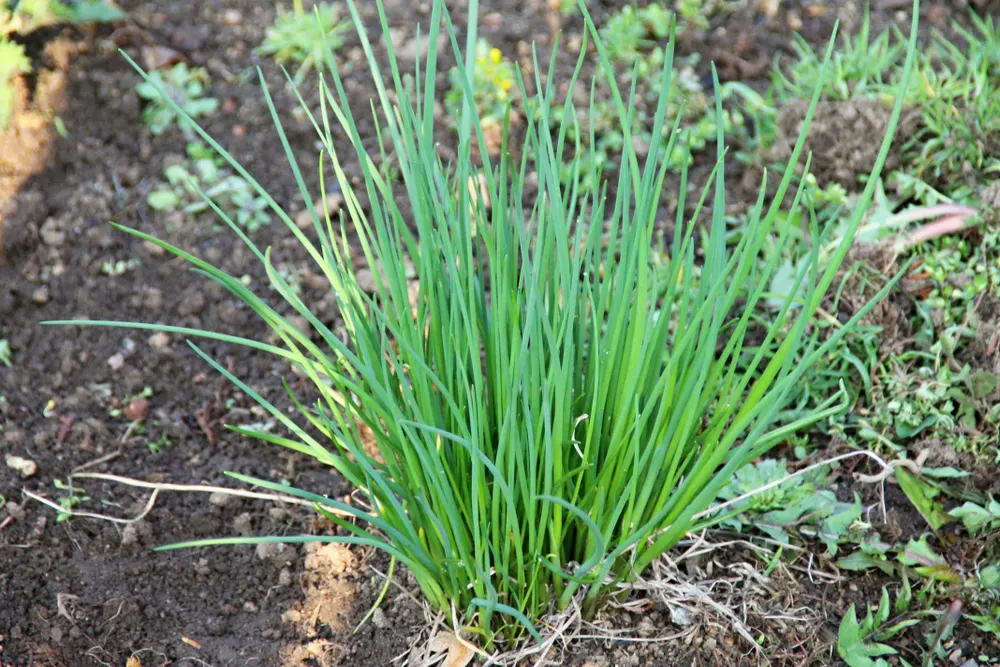
Chives are, however, sold at markets and stores. The question is: how fresh are they by the time they make it to your table?
Isn’t it ultimately better to step outside, harvest a small bunch, chop them up and add them to salads and dips – all in a matter of minutes? Plus, there are lots of brilliant uses for chives and their blossoms.
You’ll be pleased to know that chives are very hardy. Such vigorous growers in fact, that they will need dividing every few years.
4. Asparagus – Asparagus officinalis
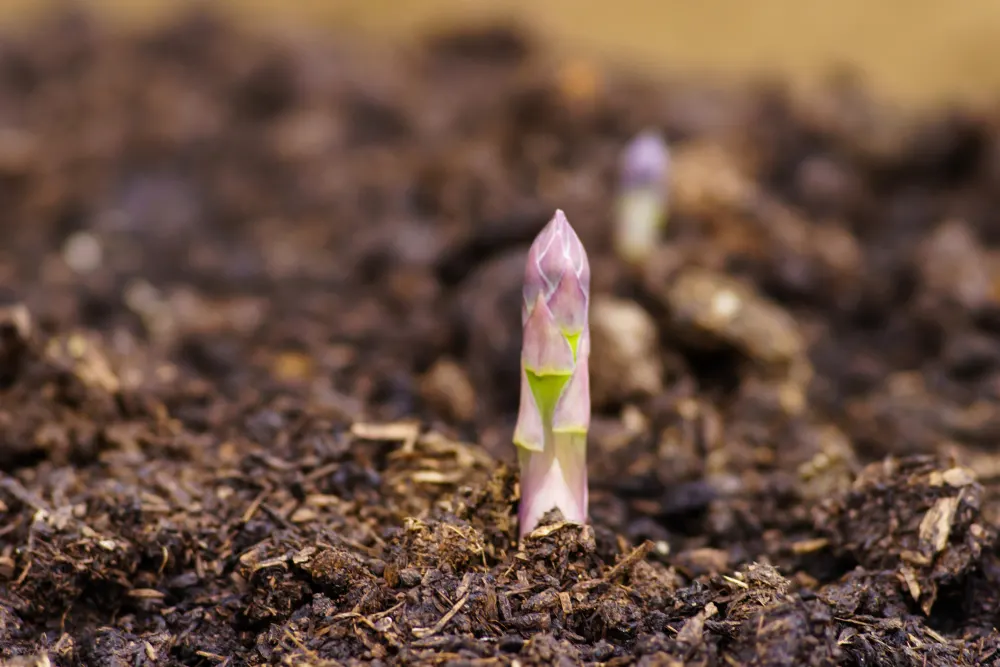
If you have extra space in your garden, asparagus will be happy to take it over. It grows both tall and wide, giving you a couple of decades’ worth of asparagus spears in exchange for your loving care.
But it can be choosy about where it resides. They love sun and soil that drains well. Once they are planted, they are there to stay.
Growing asparagus is not exactly for beginners, though if you eat it a lot, learning to grow it will become second nature.
Asparagus can be grown from seed but it’s much easier to plant bare-root crowns directly into the ground.
Take a look here for the best reviewed bare-root asparagus plants.
5. Jerusalem artichoke – Helianthus tuberosus
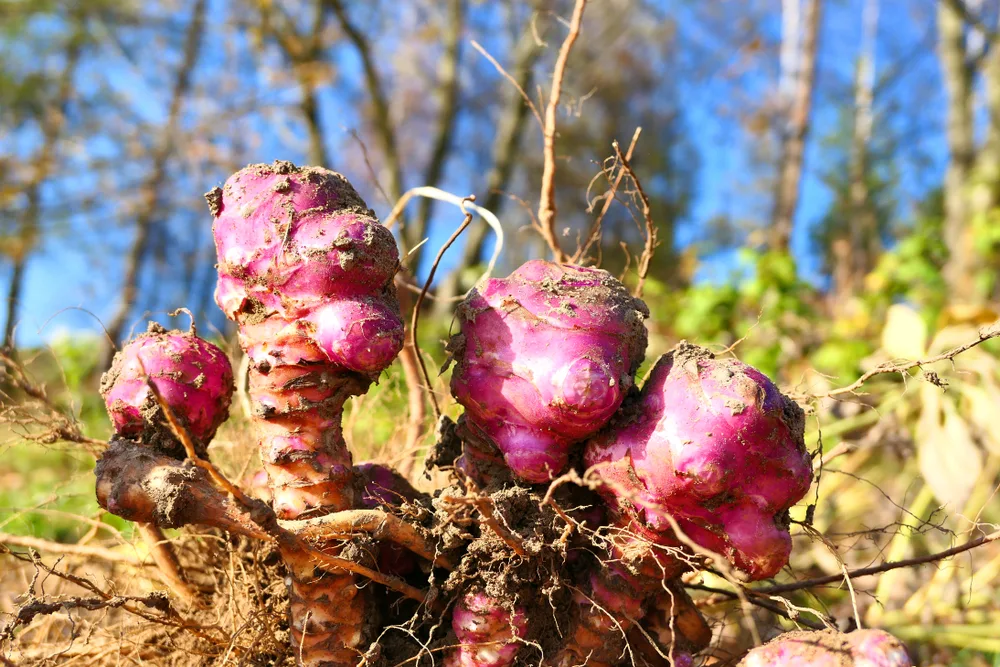
Once upon a time we had a patch of sunchokes, and they popped up reliably year after year. One summer we had three months without rain, and no water in the well to water our garden.
What survived?
Sage and these artichokes. If you are looking for a drought-tolerant perennial, this is the one.
A note of caution: if you are new to growing and eating Jerusalem artichokes: don’t eat too many at once. They are not a substitute for potatoes.
6. Globe artichoke – Cynara scolymus
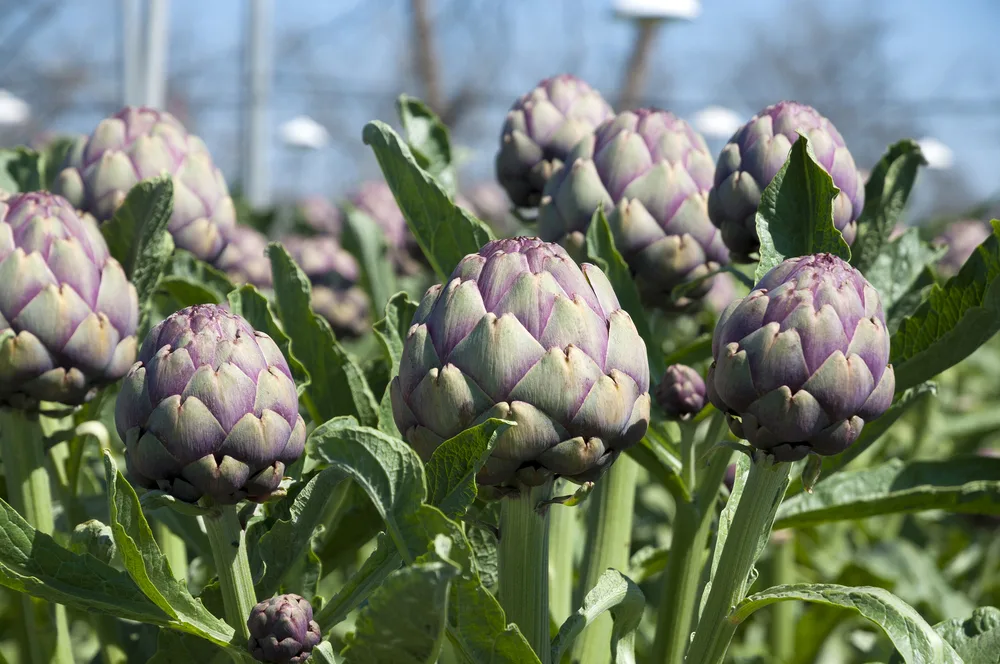
In terms of height, artichokes often come out on top – at about 5′ to be sure. It is beautiful from head to toe, and although it has a long growing season, the flavor is well worth the wait.
Artichokes can be grown either as an annual or a perennial. In the latter case, they must be protected during the winter months.
Before planting, find out what varieties grow best in your zone, then wait 2 years for the first harvest.
You may have started to notice that perennials share a common theme – you will have to wait some time for the best bites.
7. Horseradish – Armoracia rusticana
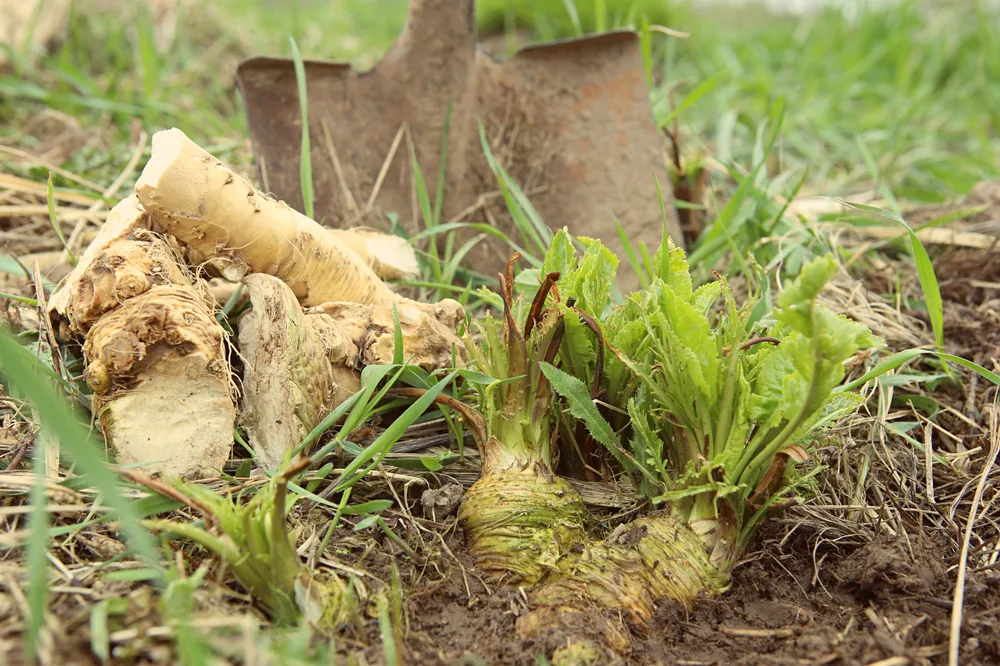
If you are looking to add some warmth to your winter meals, a little bit of grated horseradish goes a long way. The best way to get to that root, is to harvest it fresh, for as long as you can dig the soil.
It is in the same Cruciferae family as broccoli, cabbages and Brussels sprouts, yet it is hardier than all three combined.
Add some zesty root to your potato salad or serve up a spicy bloody Mary – depending on the time of day, and company of course.
Read Next: How To Grow Horseradish & 9 Ways To Use It
8. Watercress – Nasturtium officinale
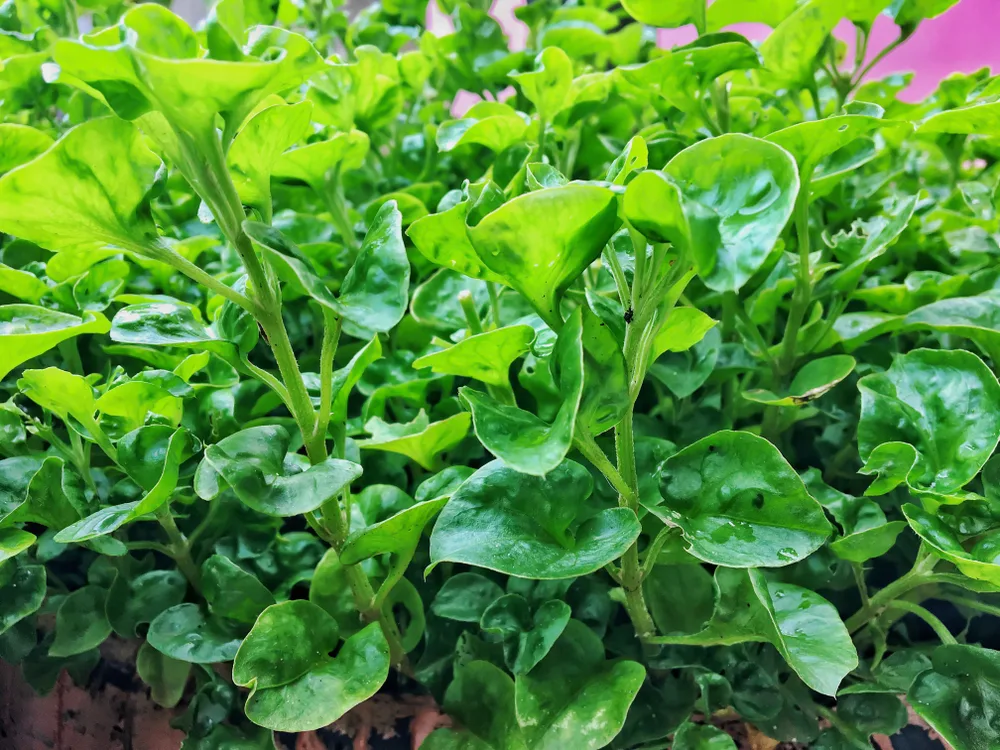
If you love slightly peppery leaves, similar to that of arugula/rocket, then you are going to adore watercress from your own backyard.
How to grow watercress, you ask?
It isn’t the simplest-to-care-for plant, as it is also attractive to many pests such as snails, white flies and spider mites.
But, some of the best things in life take time and work. With the right set-up you can harvest vitamins A and C from watercress year round. Not only that, watercress is rich in niacin, thiamine and iron, better than an ordinary leafy salad!
9. Garlic (typically grown as an annual) – Allium sativum
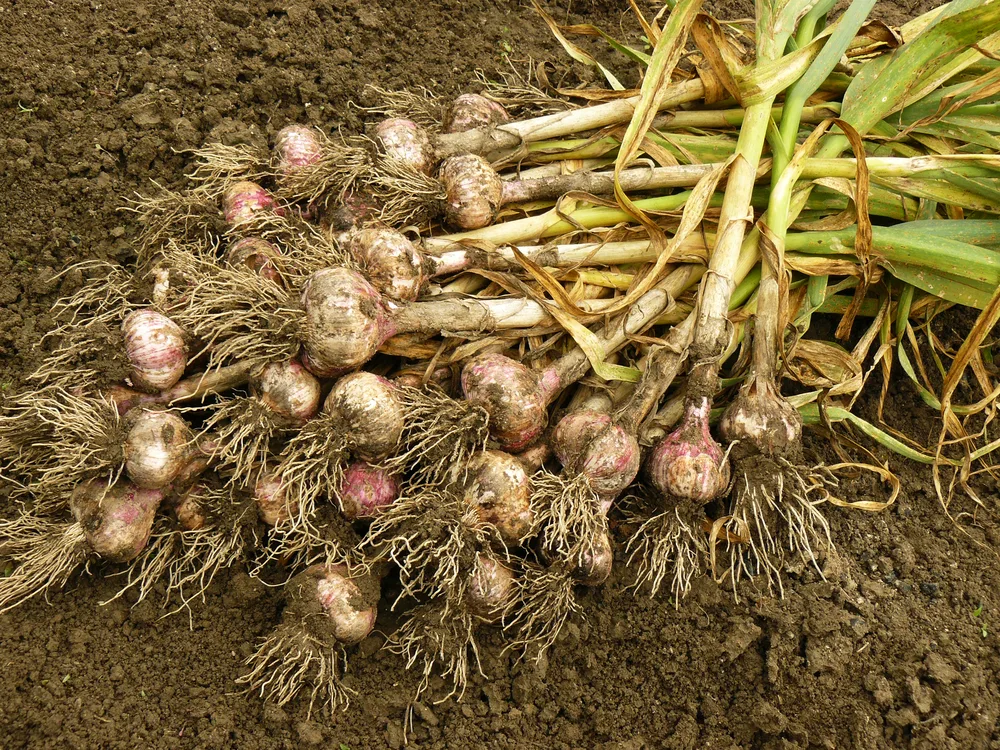
You already know the benefits of planting garlic in the fall, now you are about to find out that you can also keep it in the ground as a perennial.
Leave the bulbs in the soil for a couple of seasons (assuming that you are not digging up the garden!) and let them multiply on their own. You’ll end up with a bunch of small bulbs, not entire heads, but with loads of garlic scapes to use up.
And that is a wonderful thing! Here are 15 Ways to Use Garlic Scapes – just to get you started thinking of the possibilities.
Now you can divide those individual bulbs, and plant them just as you would an individual clove, and keep the harvests coming.
Read more about growing garlic as a perennial here.
10. Kale (typically grown as an annual) – Brassica oleracea var. sabellica
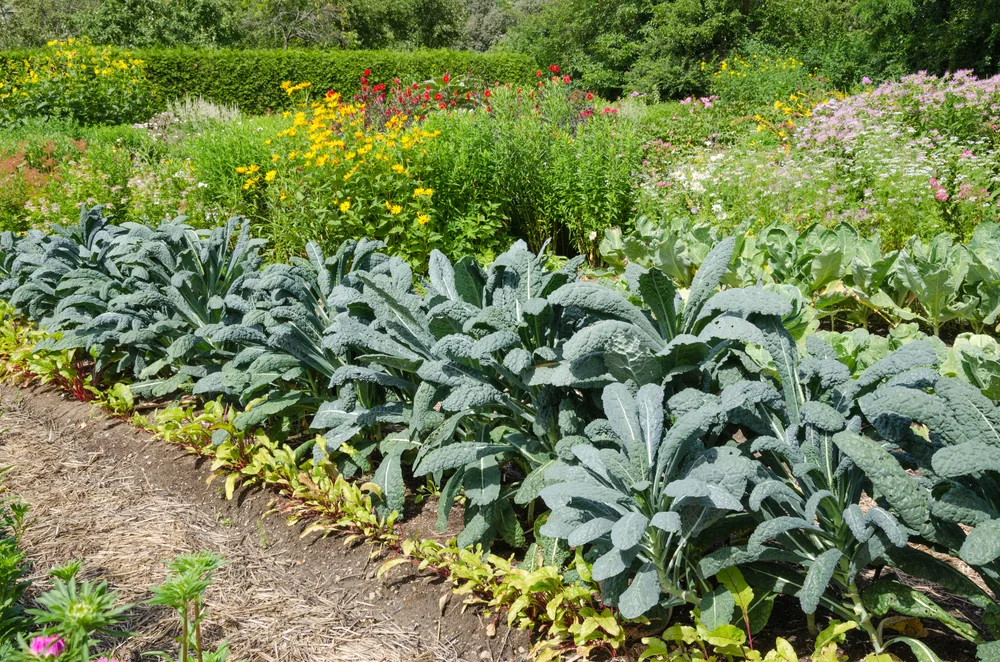
Kale is a hardy annual with a short time to harvest.
The real beauty lies in the fact that you can harvest leaves until the first frosts hit and the snowflakes fly.
Technically, kale is a biennial, yet it is treated like an annual. However, it can also be a perennial, depending on how you stretch your reality.
If you leave it in the garden over winter, covered with mulch, it will begin to regrow in early spring, sending up new shoots and leaves. Again, it takes a no-dig approach, so make sure to plan your garden accordingly.
More perennial vegetables to grow in your garden
Outside of the basic perennials, there are several others that you need to meet – and eat. Some you may find at a farmers market, the rest you will have to plant for yourself!
11. Bunching onions – Egyptian onions – Allium proliferum
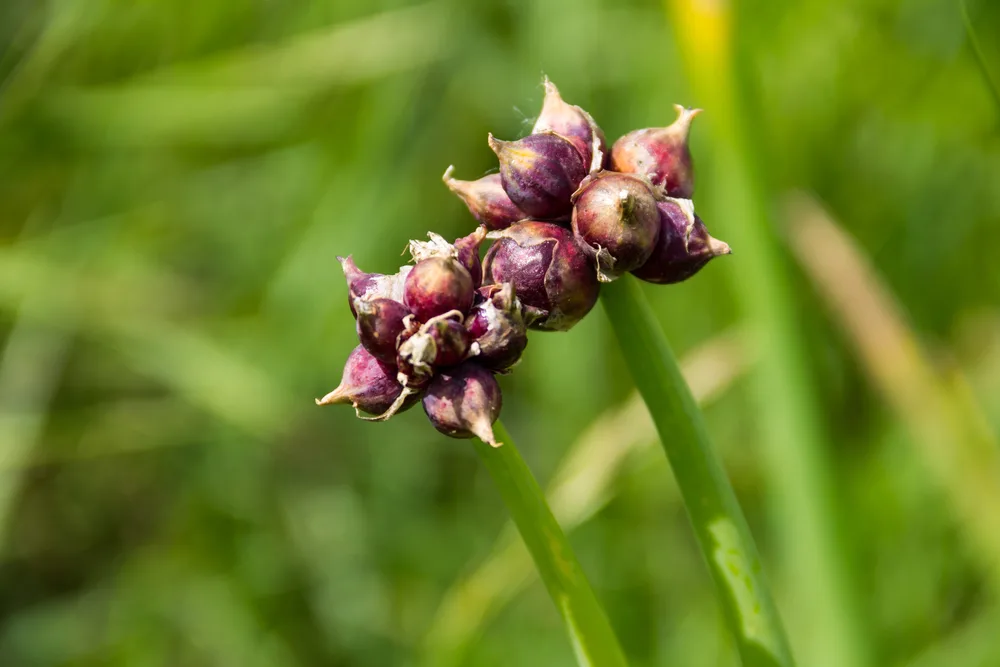
Walking onions produce bulbs at the top of each plant, all of which can be planted or eaten. They taste more similar to a shallot than an onion, and they are truly lovely vegetables!
You might be wondering, how do they “walk”?
Well, as soon as the mature bulbs on top become heavy, they gracefully fall over and plant themselves where they land. It is all a matter of evolution.
They can travel 24 inches every year, making for some excitement and good nature in the garden.
12. Good King Henry – Chenopodium bonus-henricus
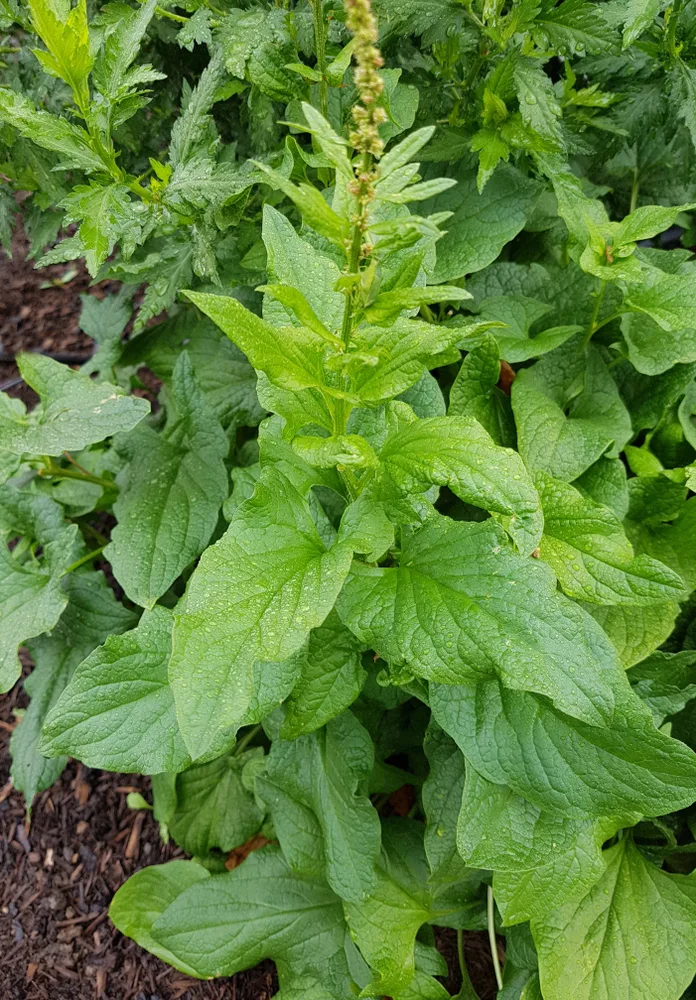
This is the poor-man’s asparagus that no one is talking about, but perhaps they should be.
It adapts well to a garden or food forest, as it will grow in both partial shade and full sun.
Like other plants in the Chenopodiaceae family, including the wild harvested goosefoot, all plant parts will be high in oxalic acids (like spinach and sorrel), so you will want to enjoy it in moderation.
13. Lovage – Levisticum officinale
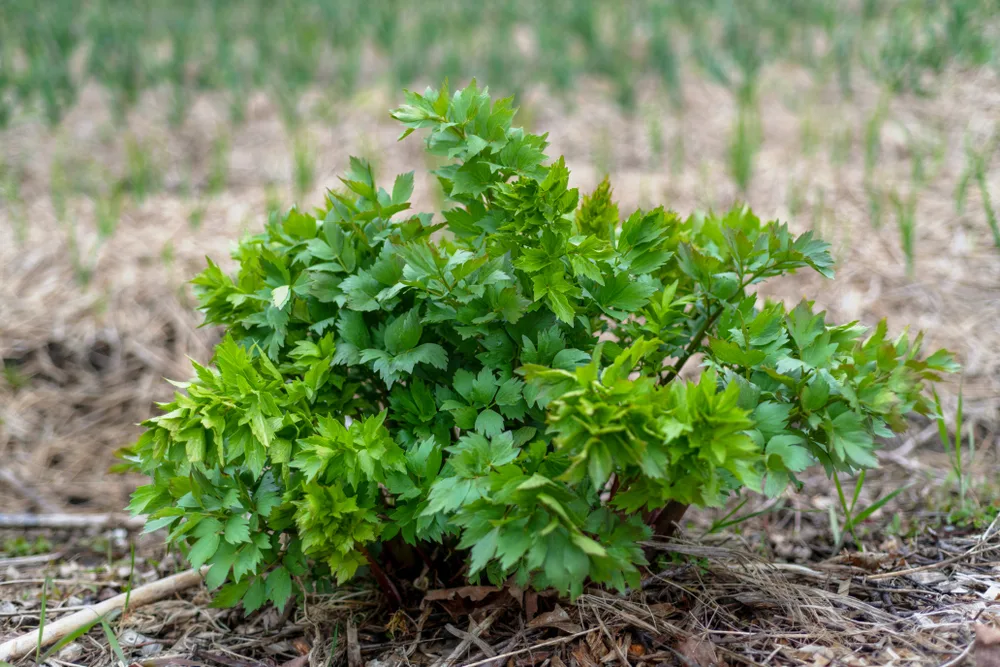
Lovage is a beloved herb that has been cultivated since the Middle Ages. But why is it that so few people seem to know it today?
It does have a much stronger flavor than celery, yet that is a trait to be admired!
Just a few plants in your garden will be enough for the entire family, seeing as how they grow 6-7 feet tall. If you haven’t tried it in your soups and stews, buy some seeds and get ready for spring planting.
If you cannot manage to eat it all fresh, the leaves can be hung and dried in large bunches, ready for using all winter long.
Read Next: How To Grow Lovage – The Forgotten Herb That Everyone Should Grow
14. Ramps – Allium ursinum
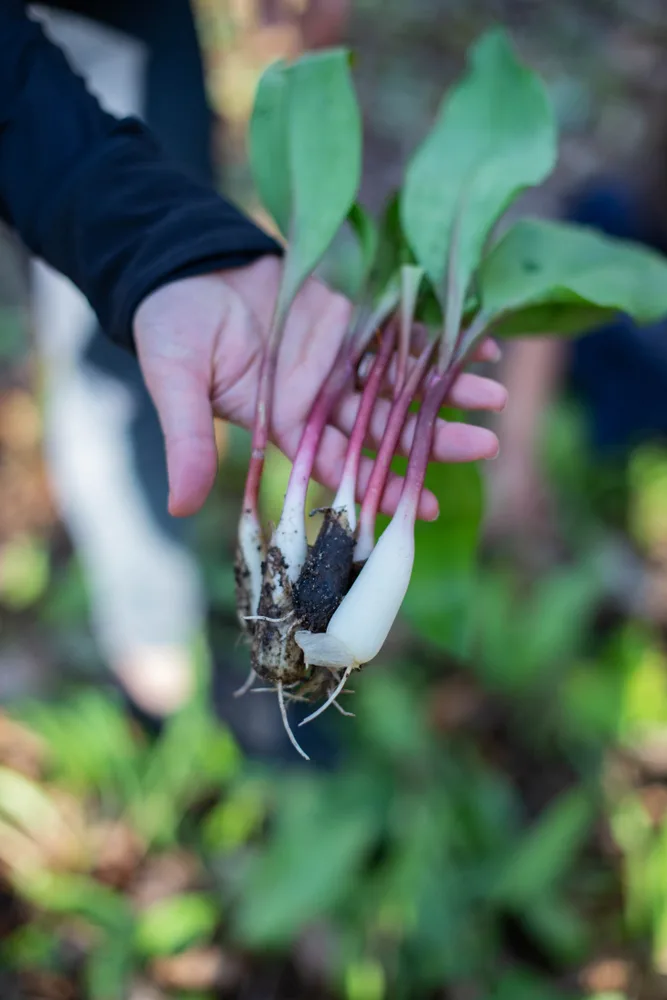
Otherwise known as ramsons, bear garlic or wild leeks, these leafy greens are among the first to pop up from the forest floor.
Seeing as how all parts are edible, including the leaves, stems and flowers, they are a very useful perennial indeed.
Growing them from seed has proven to be difficult. Though they will flourish in the right environment, especially when the bulbs are transplanted and mulched over.
Enjoy them fresh, as is, or in a wild garlic pesto.
15. Daylilies – Hemerocallis
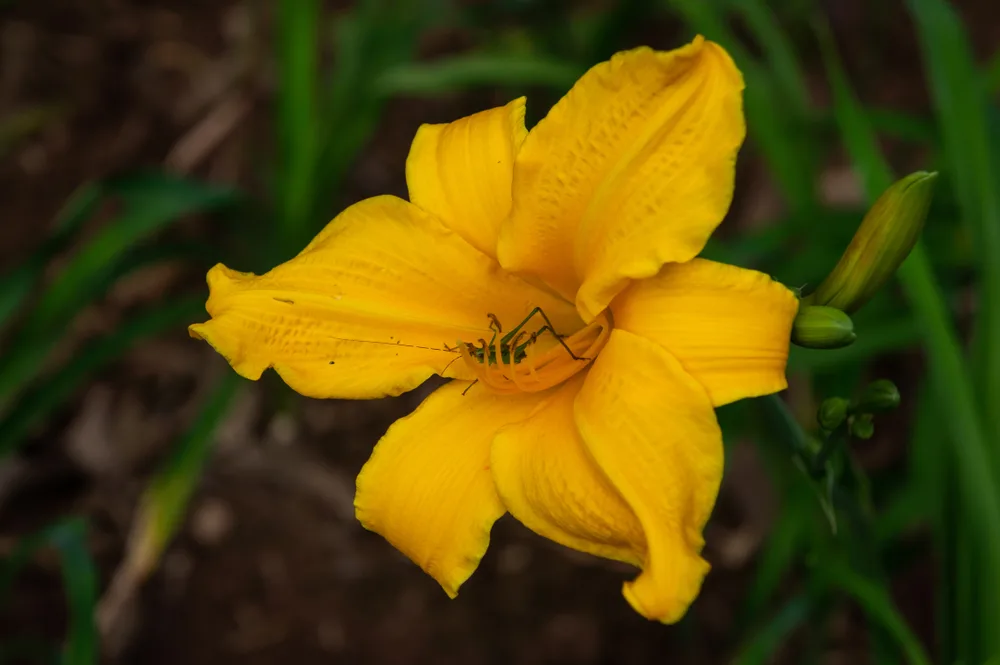
When we think of edible flowers, our minds automatically jump to nasturtiums. And yet, there are so many edible flowers out there that we haven’t dared yet to try. Some of them may include:
- calendula
- marigolds
- pansies
- hibiscus
- honeysuckle
- purslane
- squash blossoms
- rose petals
It also turns out that ornamental daylilies are edible too! Who would have thought that Dining on Daylilies could be so tasty?
16. Ostrich fern – Matteuccia struthiopteris
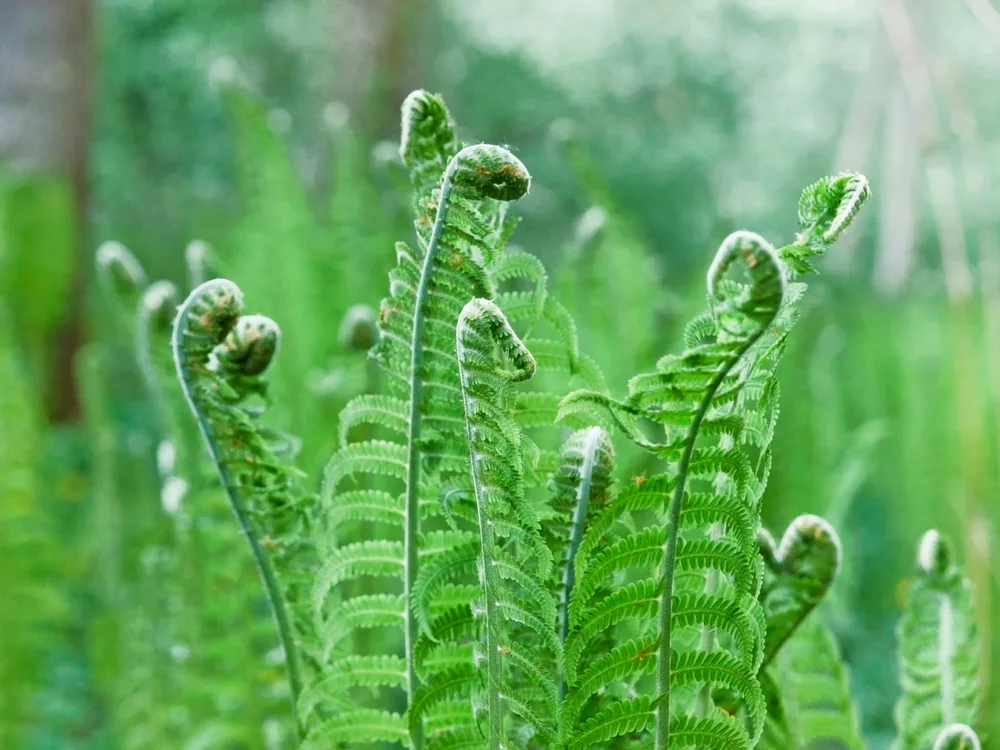
One seasonal vegetable you may not expect to find on this list, rather on a fancy menu, is the humble fiddlehead fern.
Before you get all excited about foraging for fiddleheads, you better learn more about them first, because they can be a bit fiddly.
Find more details on How to Find, Identify and Cook Fiddleheads @ Fearless Eating.
17. Radicchio (typically grown as an annual) – Cichorium intybus
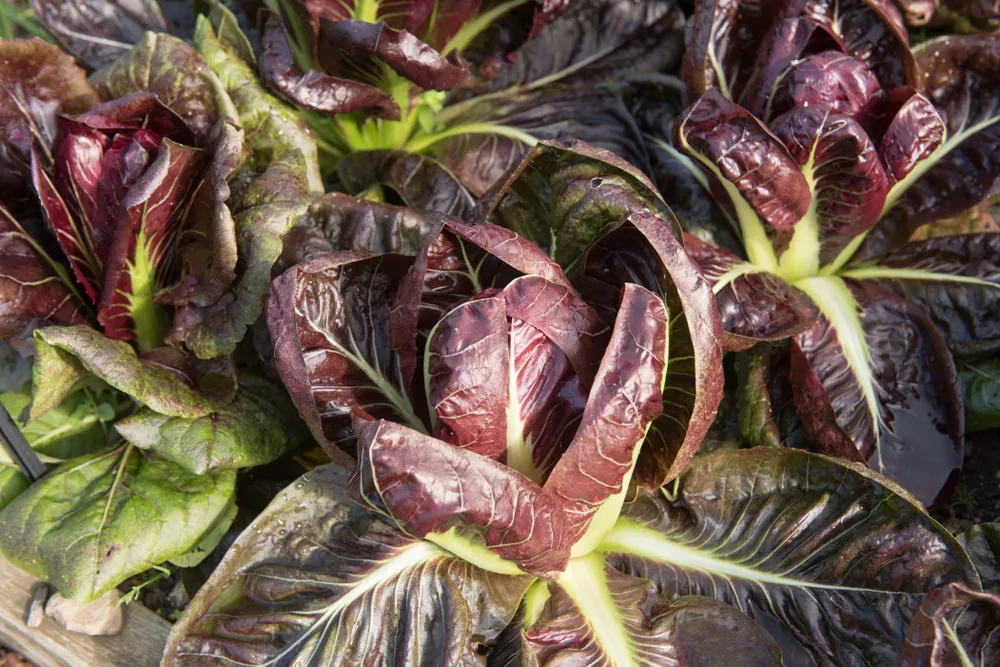
Red chicory, or radicchio, which looks like a small red cabbage, is a distinctive vegetable commonly eaten in Italy. However, the further one gets from Europe, the less it is recognized.
Let’s give it the recognition it deserves, and say that it is not only frost tolerant, it is a superb addition to your diet, for it is the bitterness which makes it extremely healthy.
Radicchio can be planted in spring or summer/early fall and harvested twice a year.
18. Three cornered leek – Allium triquetrum
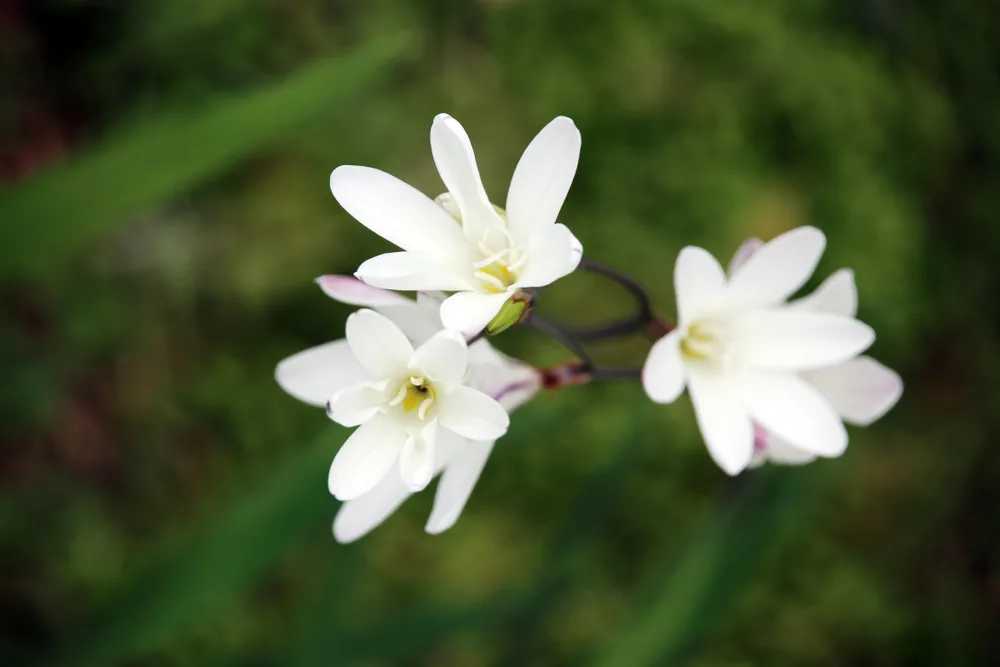
While it may be an exotic, native to the Mediterranean, three cornered leeks are a forager’s dream.
Just like with ramsons, you can transplant some bulbs to your garden, and know exactly where to “hunt” in April and May when they begin to flower. Leaves can also be harvested in late autumn when other crops begin to wane.
And don’t get me started on lacto-fermenting the flower buds…
Gardening on any level can be challenging. It is always best to start with the basics, and grow upwards and onwards from there.
Begin with annuals – grow as many buckets of tomatoes you can eat! Learn how to can and preserve your crops. Then embrace the diversity of perennials and acquire a love for new flavors, textures and dining experiences. Perennials will broaden both your garden horizon and your mind.
If you have fallen into the depths of permaculture and organic gardening, chances are great that you’ve also heard about a book called Perennial Vegetables by Eric Toensmeier.
There are more than 100 species of perennials to discover, what are you waiting for?
Perennial fruits and nuts you don’t want to miss out on
You know deep in your heart, that there is so much more to life than munching on greens and vegetables. One can only eat so many leaves of lettuce and florets of broccoli.
As reassuring as it is to shop for an endless supply of fruits at the store, what if they grew right outside your door?
They can, if you let them. Here are some perennials that are worth growing in your backyard:
Raspberries, blackberries, blueberries and other berry bushes/canes
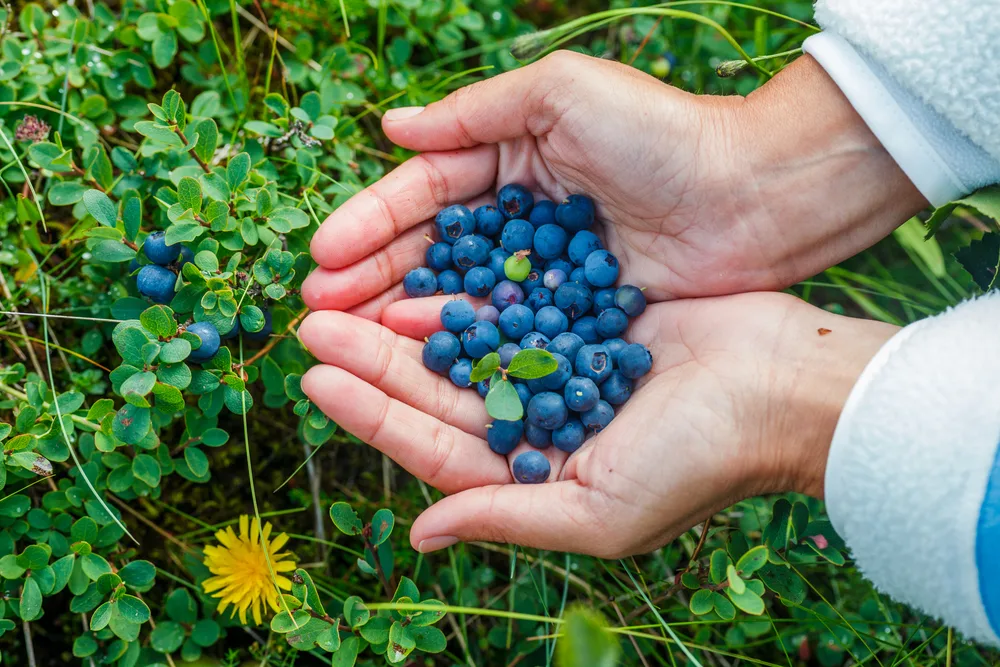
A good berry patch will attract kids and adults alike. Who can resist a pail of gooseberries or the ripest raspberries on the block?
Pulling a raspberry straight from the vine and popping it into your mouth is one of life’s great pleasures and your raspberries will come back year after year and more abundant than ever – as long as you prune them right.
Here’s how to plant raspberry canes.
Blueberries are irresistible too – in muffins, sauce and jam. If you have the land for planting a blueberry bush or ten, put it in as soon as possible.
Why wait with harvesting fresh-picked berries of all kinds?
Related Reading: 20 Fruit Canes & Bushes To Grow In Your Garden
Grapes
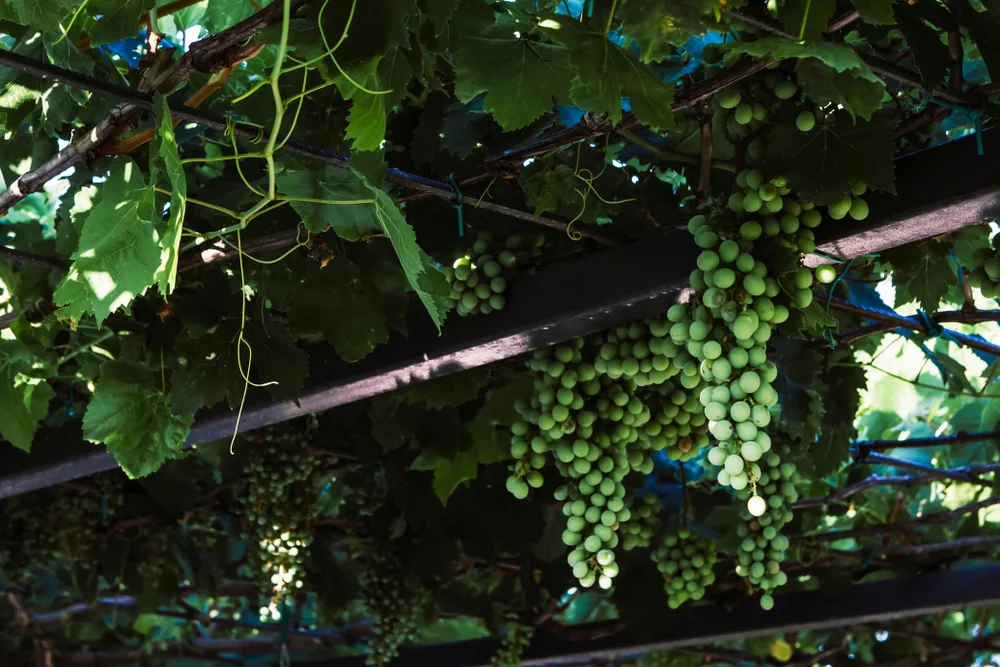
Did you know that one grape vine can produce an enormous amount of fruit for more than 50+ years? Of course, the harvest will vary from season to season, but there will always be a bunch to reap.
Planting grapes is a long-term investment, so try and sample different grape varieties before you get started with digging and putting in a trellis. All that preliminary work will be paid off, grapely, in the years to come.
Fruits and nuts of all shapes and sizes
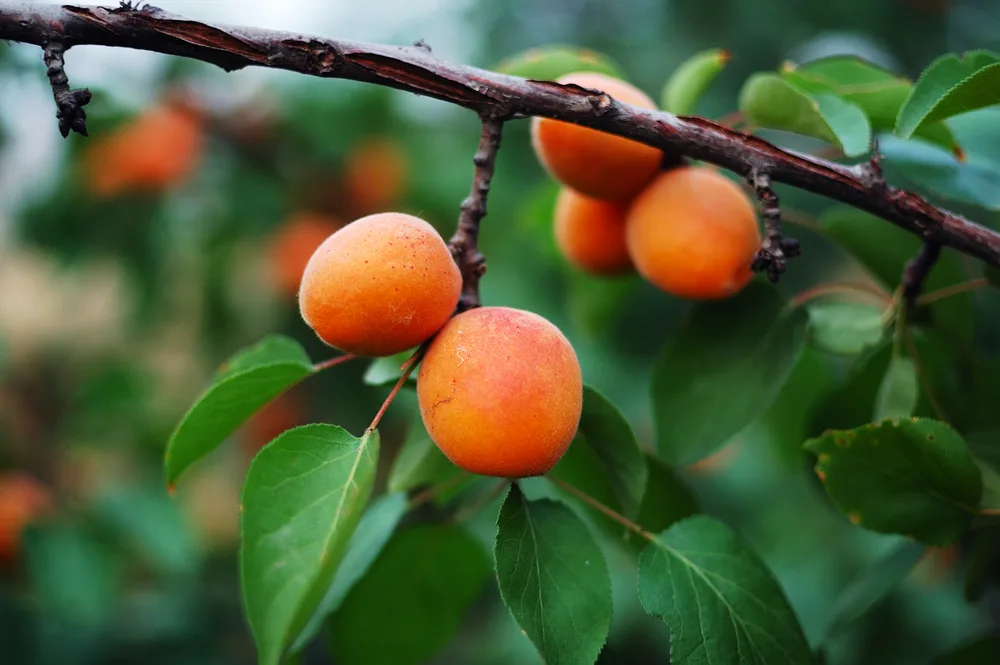
Cherries, apples, pears, apricots, plums, mulberries, hazelnuts, almonds, walnuts… They are all perennials, and they are all tasty.
If your homestead or backyard has room for a single tree or an entire orchard, know that fall planting is the best. Spring will do too, you may just need to be more diligent about watering in the first few months.
Don’t forget about “perennials” such as mushrooms and truffles. No, not the chocolate kind, the ones that are far more expensive and down to earth.
Challenges and downfalls of growing garden perennials
Now, that we have shown the true beauty of what perennial vegetables have to offer, note that they are not for every garden.
Size is often the first limitation, especially when it comes to larger bushes and trees.
Other times perennials may get out of control and become “weeds” if conditions are right for them to thrive. Daylilies come to mind, as well as horseradish on this one.
If time is a concern, there is a wonderful chance that you will have to wait.
Some perennials are slow to establish (think of asparagus) and may take several seasons till you are able to harvest a significant amount.
If you are settled in your own home, perennials are always worth the wait. However, if you are renting, or living somewhere on a temporary basis, annuals and biennials are a better bet for having the opportunity to harvest.
It goes without saying that perennials require a permanent position in your yard or garden – as they will remain in the same spot for several years.
Grow your garden around them if possible, just know that there may be times when perennials acquire a disease, making their removal imminent.
In that case, they must be replaced, with another non-related plant, to stop the spread of disease or infestation.
Pros and cons aside, perennials are a great addition to any, and all gardens, so that you can keep harvesting a reliable crop year after year.
What perennial vegetables are calling out to you?
Asparagus? Chives? Wild leeks or rhubarb pies?
Plant a few and see what happens.
Not only are perennials wonderful for ushering a melange of herbs and vegetables into your garden, think of the joy they bring to the dinner table – and just imagine the vibrant health that comes with digging into a diverse diet!
Pin This To Save For Later
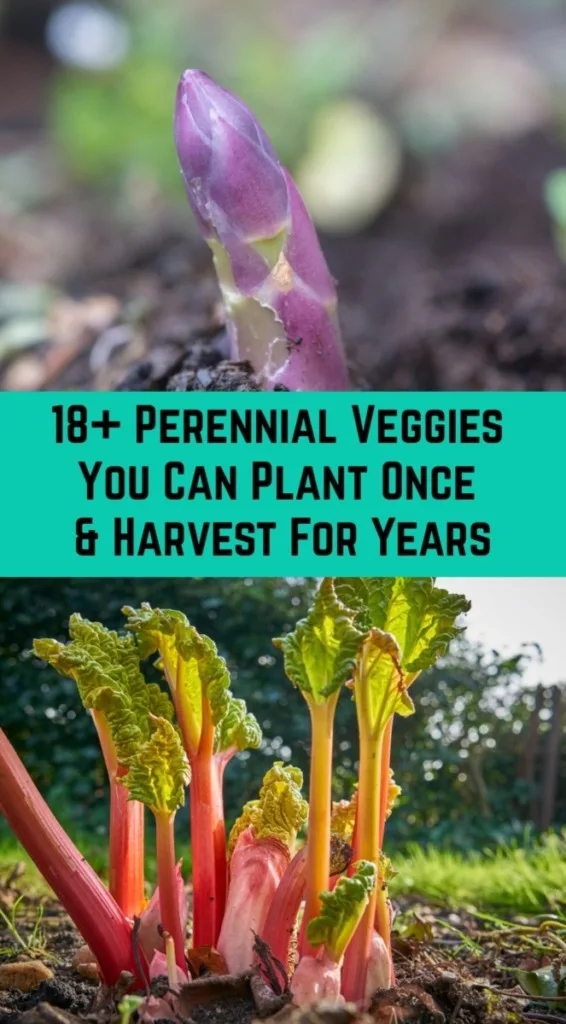

Get the famous Rural Sprout newsletter delivered to your inbox.
Including Sunday musings from our editor, Tracey, as well as “What’s Up Wednesday” our roundup of what’s in season and new article updates and alerts.

